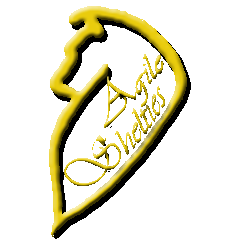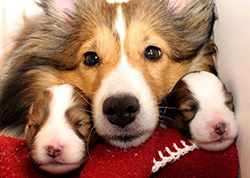Great dogs are not just born: but made. Raising pups with potential is a very time-consuming venture, and is always worth the effort!
After the genetics are set (nature) and the pups are on the ground, the environment (nurture) now influences each pup and they are busy learning 24/7.
I use management, diversion, and positive reinforcing methods to shape and teach each pup starting at 3 weeks of age. We start a system of gradually introducing new elements to the puppies as they develop, and encouraging more and more involvement from the pups as a group and individuals. This gentle start gives them the foundation tools they need to be well-rounded adults dogs.
THE PLAN
During the first 2 weeks resting, grouping, keeping warm, gentle handling, nursing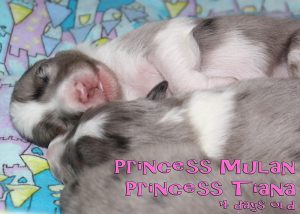 , neurological development, motor skills and Early Neurological Stimulation (ENS) is the main focus for all the pups. The ENS process only takes a few minutes per pup and is done every day. To learn more about the ENS with animals please visit “Developing High Achievers” by Dr. Carmen L Battaglia, or see our ‘Puppies‘ page to see our pups as they are handled the as per this program.
, neurological development, motor skills and Early Neurological Stimulation (ENS) is the main focus for all the pups. The ENS process only takes a few minutes per pup and is done every day. To learn more about the ENS with animals please visit “Developing High Achievers” by Dr. Carmen L Battaglia, or see our ‘Puppies‘ page to see our pups as they are handled the as per this program.
The first 4 weeks are filled with familiarity, and new stimuli presented in a controlled manner. The pups natural tendency’s and physical growth are gently stimulated and nurtured.
From the age of 5 to 9 weeks, pups undergo further stimulation to sights, sounds, tastes, new places/ dogs/people and floor textures, as well as the social teachings, begin from the parent dog(s) and non-parent dogs and humans.
Agile pups are old enough and ready to leave here at 8 weeks of age and go with many skills started. They have been litter trained and have had a week or more of sleeping in individual crates. Once the pups are sleeping in the crates over-night the house training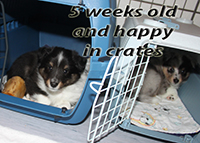 to the outdoors can begin. Sits, downs, wait and come have all been started, as well as a ‘house’ command and learning to sit-to-be-greeted. They have been for several car rides, been dragging leashes, experienced new textures and tastes, met a few new calm dogs, been learning to be gentle
to the outdoors can begin. Sits, downs, wait and come have all been started, as well as a ‘house’ command and learning to sit-to-be-greeted. They have been for several car rides, been dragging leashes, experienced new textures and tastes, met a few new calm dogs, been learning to be gentle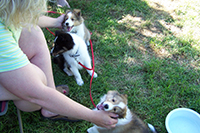 with human skin and hands, and are learning to follow the humans with the ‘lets-go‘ command.
with human skin and hands, and are learning to follow the humans with the ‘lets-go‘ command.
Around the 9 week mark, the pups I’ve picked to be my grow-outs have started many new things. I start clicker training and have a video of Winston at 10 weeks of age doing come, sits, downs, stands, ready (focus and look at my face), spin, follow the food, touch, targeting, drop-it, and first tippy board steps. Often pups have gone to their homes at 8 weeks, and we love to get together to teach each pup these skills.
By 11 weeks, Winston was practicing his sit for greetings, loose leash walking (on either side of me), a new pop up stand, retrieve with drop-it, targeting with distance, more involvement on the tippy board and standing and stacking on a grooming table. All are great fun to teach and learn while creating a skill set for a life time.
Being young and open to easy learning is time relative and there is no going back in time.
Thanks for viewing this page
